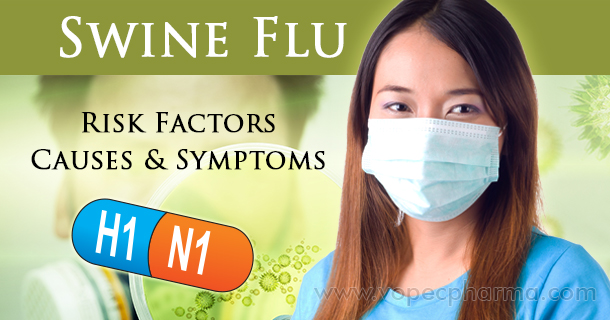Swine flu or the H1N1 as it is commonly referred to, is on the spread for a long time now. A small sneeze from your kid or a slight temperature for your friend puts you in fear for H1N1.
This being the case, it might be a kind of illumination to you if you get to know which age category and what sort of symptoms are vulnerable to H1N1. Here are the risk factors you must take into notice:

- Children from the age of 6 months to elders up to the age of 50
- Those who have respiratory issues like asthma and wheezing
- People who suffer from diabetes, neurological, hematologic, or metabolic disorders
- Pregnant women
- Obese people
- People who hail from an unhygienic environment
Causes
The swine influenza is brought about by a strain of flu infection that normally just contaminates pigs. Dissimilar to typhus, which can be transmitted by lice or ticks, the primary transmission isn’t from pigs to individuals, but instead from individual to individual.
Swine influenza is exceptionally infectious. The infection is spread through spit and bodily fluid particles. Individuals may spread them by:
- sneezing
- coughing
- touching a germ-covered surface and then touching their eyes or nose
Symptoms
The indications of swine influenza are all that much like those of consistent flu. They include:
- chills
- fever
- hacking
- sore throat
Preventing Swine Flu
- Habitually washing hands with cleanser or hand sanitizer
- Not touching your nose, mouth, or eyes (the infection can make due on phones, table tops, and so on.)
- Staying home from work in case you’re sick
- Evading extensive social events when swine influenza is in season. Influenza season shifts from year to year. It normally crests in January, in spite of the fact that it is conceivable to get seasonal influenza at whatever time of year.

 March 24th, 2015
March 24th, 2015 Posted in
Posted in  Tags:
Tags: